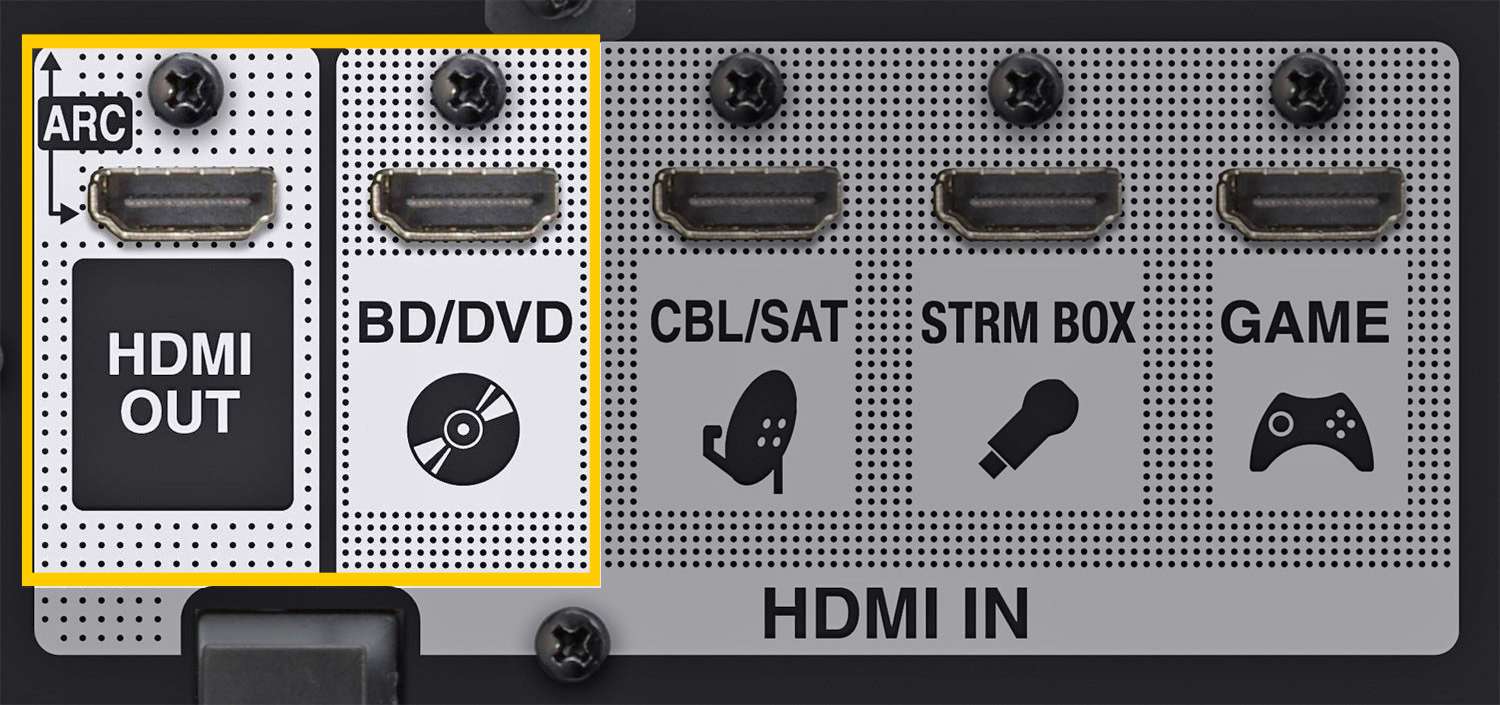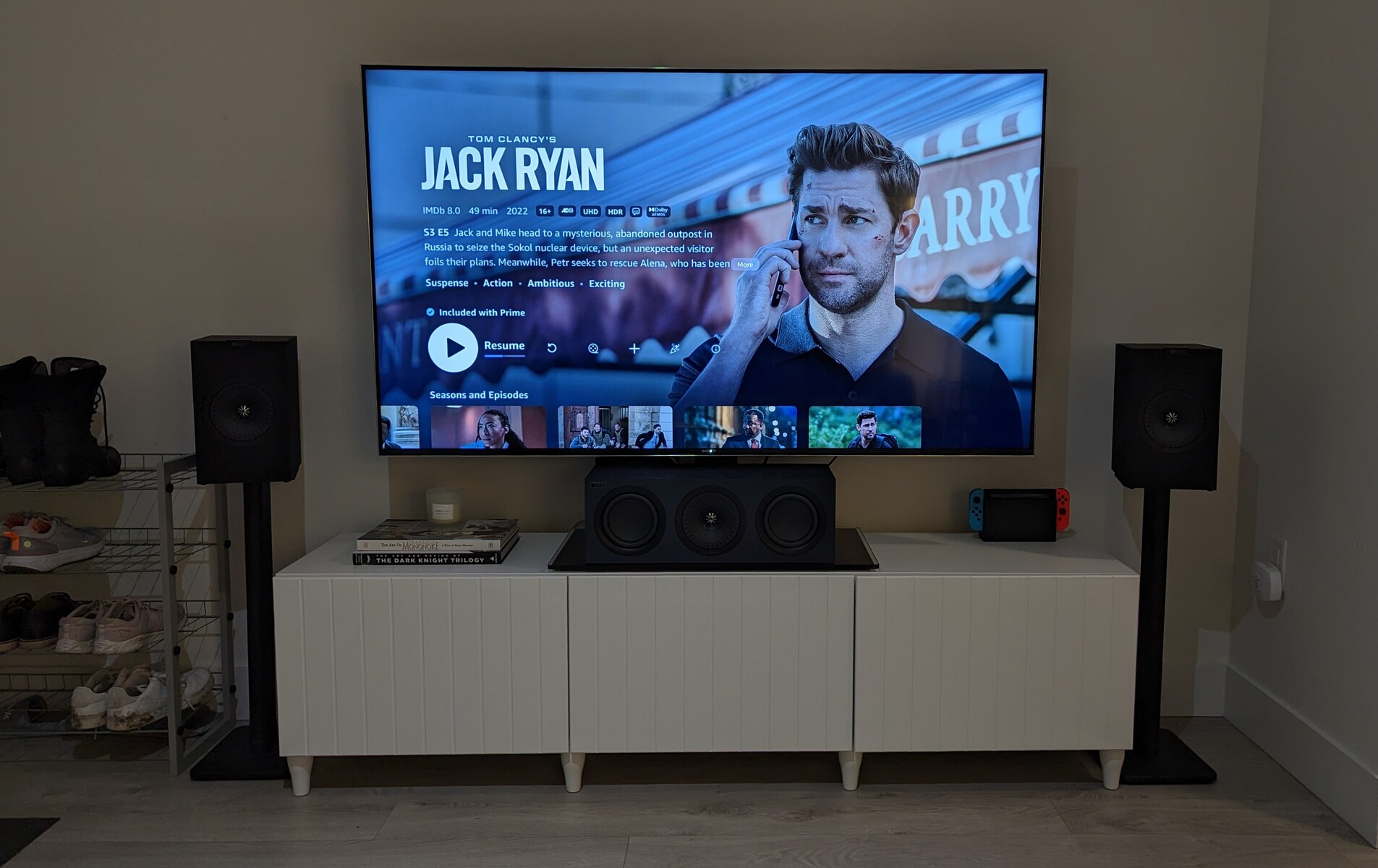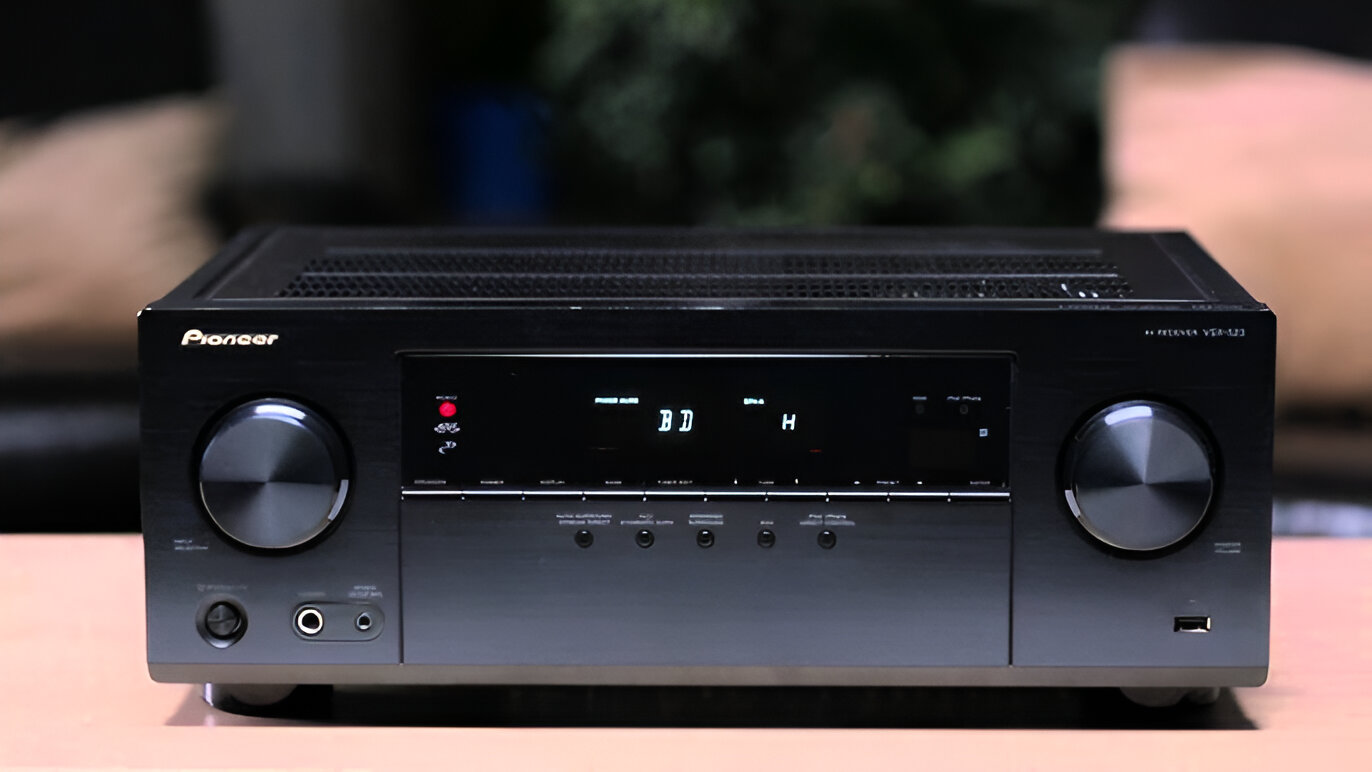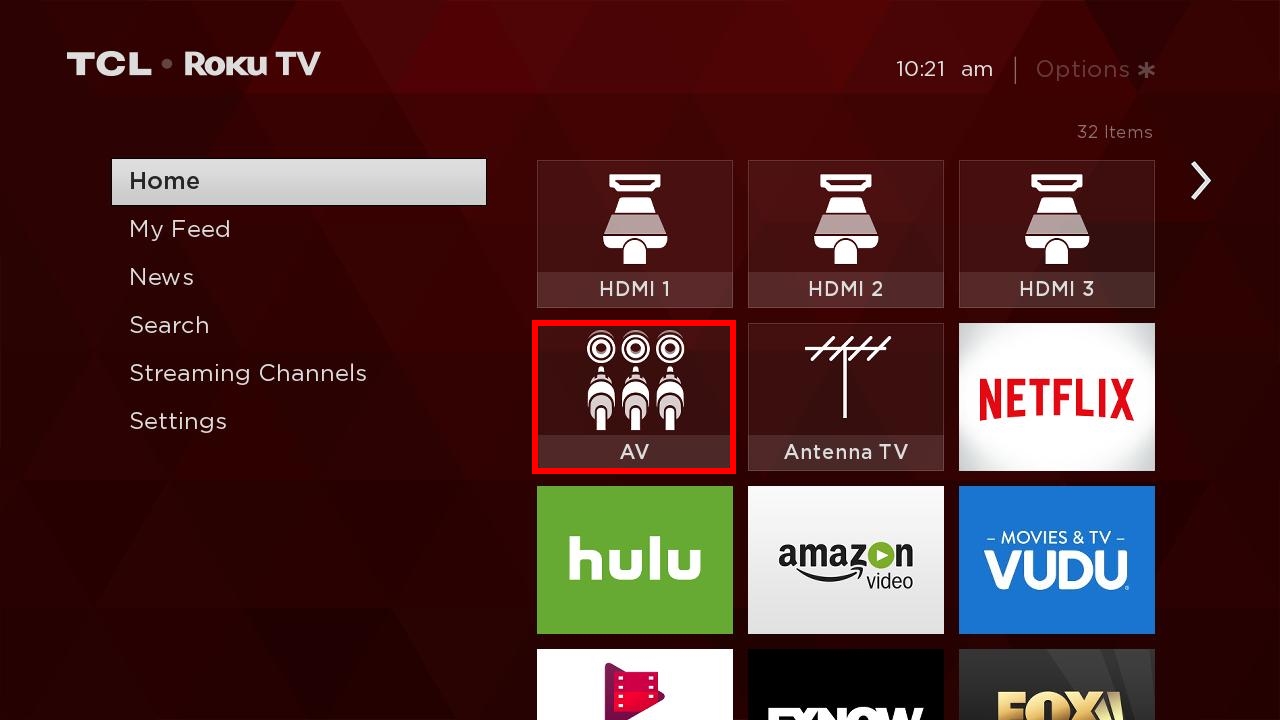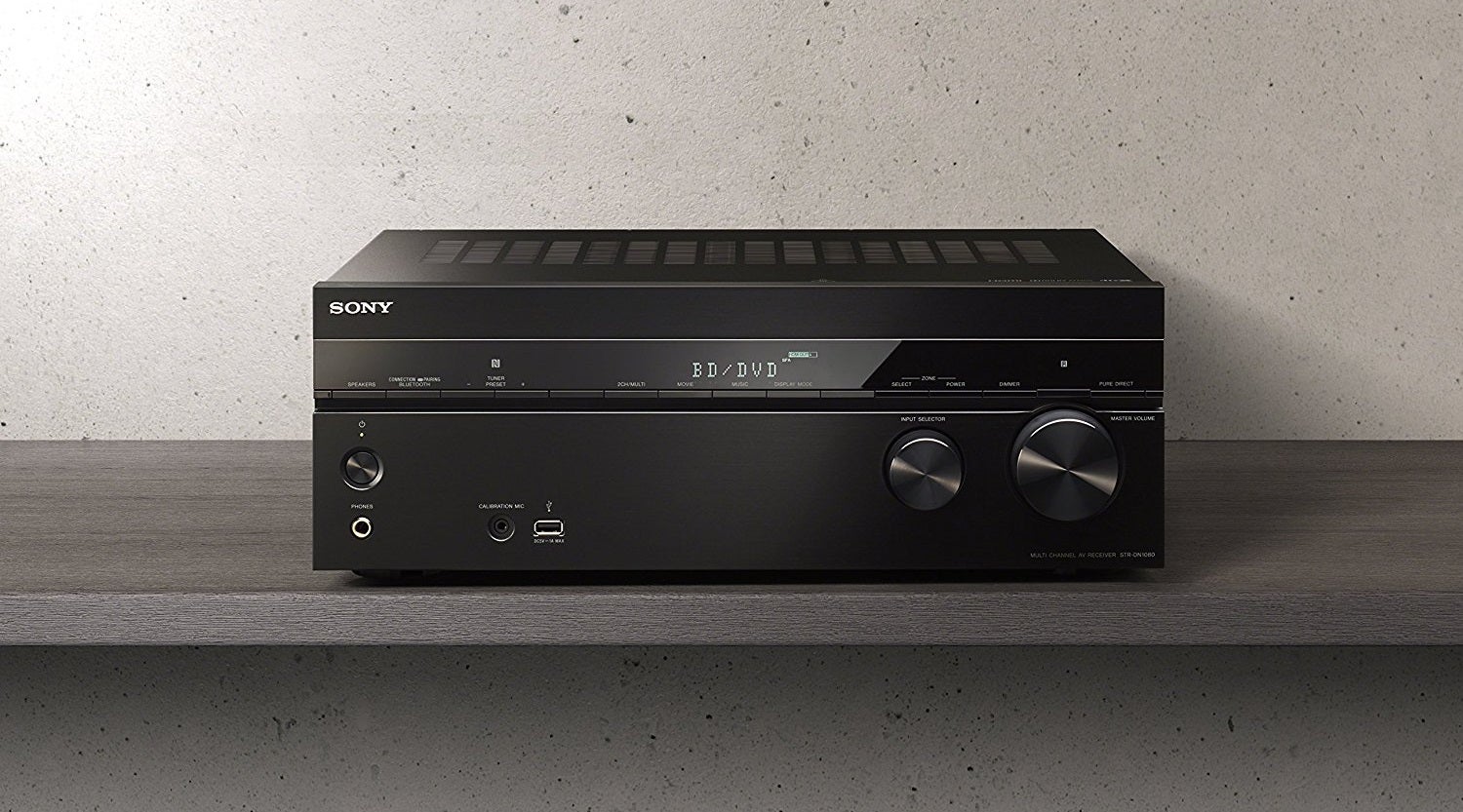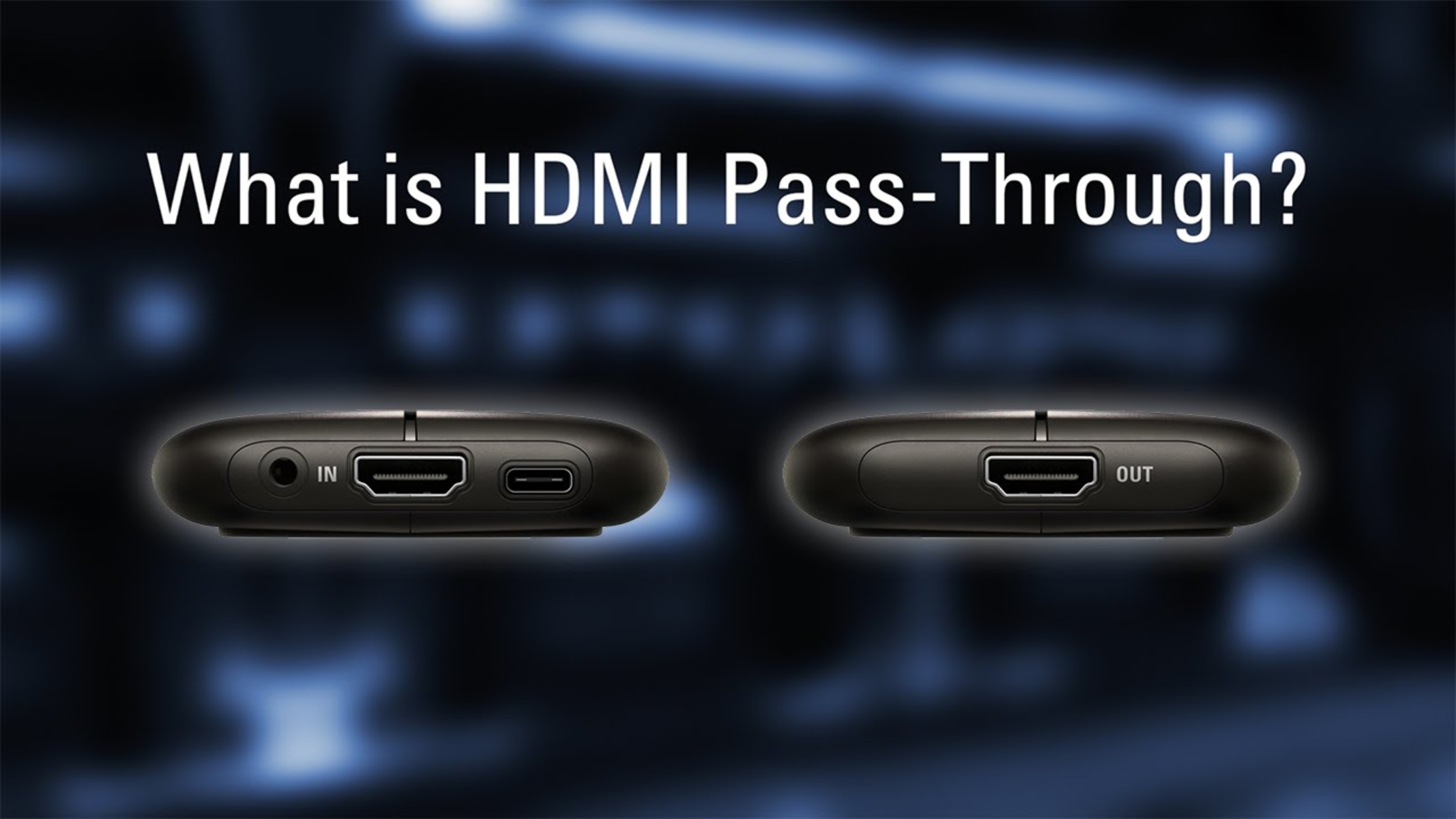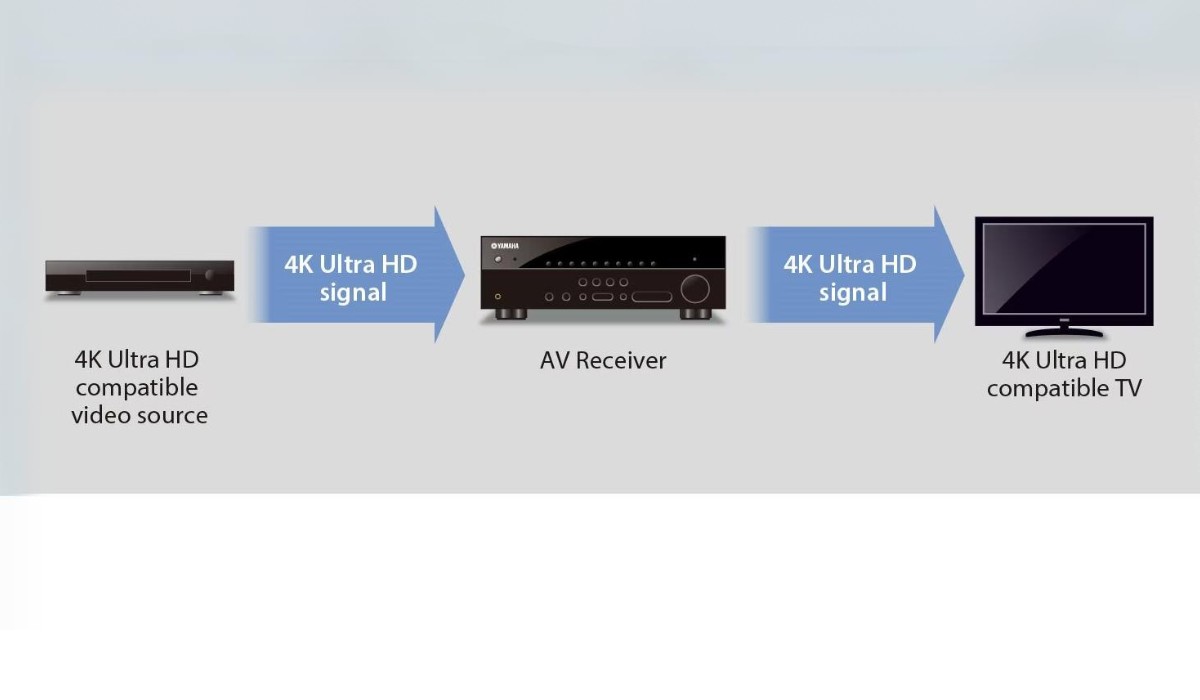Introduction
So, you've just bought a shiny new Blu-ray player and an AV receiver, and you're eager to experience the ultimate home theater setup. Connecting your Blu-ray player to an AV receiver can significantly enhance your audio-visual experience, allowing you to enjoy immersive sound and crystal-clear visuals. Whether you're a cinephile looking to recreate the cinema experience at home or a casual movie enthusiast seeking better audio quality, this guide will walk you through the process of hooking up your Blu-ray player to an AV receiver.
In this step-by-step tutorial, you'll learn how to gather the necessary cables and equipment, connect the Blu-ray player to the AV receiver, configure the audio and video settings, and troubleshoot any issues that may arise. By the end of this guide, you'll be ready to sit back, relax, and immerse yourself in your favorite movies with unparalleled audio and visual fidelity.
Before we dive into the nitty-gritty details, it's important to note that connecting a Blu-ray player to an AV receiver requires a basic understanding of audio and video connections. Don't worry if you're new to this – we'll keep things simple and easy to follow. So, grab your favorite movie snack, get comfortable, and let's embark on this audio-visual adventure together. Get ready to elevate your home entertainment experience to new heights!
Step 1: Gather the necessary cables and equipment
Before you begin the process of connecting your Blu-ray player to an AV receiver, it’s essential to gather the required cables and equipment. Ensuring that you have the right components at your disposal will streamline the setup process and prevent unnecessary delays. Here’s a comprehensive list of the items you’ll need:
- Blu-ray Player: This is the central component that will play your Blu-ray discs and provide high-definition video output.
- AV Receiver: The AV receiver serves as the hub for your home theater system, handling audio and video signals from various sources and distributing them to your speakers and display.
- HDMI Cable: A high-quality HDMI cable is essential for transmitting both audio and video signals between the Blu-ray player and the AV receiver. Look for a cable that supports the latest HDMI specifications to ensure optimal performance.
- Speaker System: Depending on your setup, you’ll need a set of speakers or a soundbar to deliver immersive surround sound. Ensure that your speaker system is compatible with the AV receiver and can be properly connected.
- Display Device: Whether it’s a TV or a projector, your display device will showcase the stunning visuals produced by the Blu-ray player. Make sure you have the necessary cables to connect the display to the AV receiver.
- Power Cords: Ensure that you have power cords for both the Blu-ray player and the AV receiver, as well as any additional components in your setup.
- Remote Control(s): If your Blu-ray player and AV receiver come with separate remote controls, have them handy for the setup process.
- User Manuals: While it may seem obvious, keeping the user manuals for your Blu-ray player and AV receiver within reach can be incredibly helpful, especially if you encounter any technical questions or issues during the setup.
By gathering these essential cables and equipment, you’ll be well-prepared to proceed with the next steps of connecting your Blu-ray player to your AV receiver. With everything in place, you’re one step closer to experiencing the full potential of your home theater system.
Step 2: Connect the Blu-ray player to the AV receiver
With all the necessary cables and equipment at your disposal, it’s time to embark on the crucial step of physically connecting your Blu-ray player to the AV receiver. This process involves establishing the audio and video connections between the two devices, ensuring seamless signal transmission for an immersive home theater experience. Follow these steps to successfully link your Blu-ray player to your AV receiver:
- Locate the HDMI Ports: Identify the HDMI output port on your Blu-ray player and the HDMI input port on your AV receiver. These ports are usually labeled for easy identification.
- Connect the HDMI Cable: Take the HDMI cable and plug one end into the HDMI output port of your Blu-ray player. Then, plug the other end into an available HDMI input port on your AV receiver. Ensure a secure connection to prevent signal loss or interference.
- Power On the Devices: Turn on your Blu-ray player and AV receiver. Once powered on, select the appropriate input source on the AV receiver that corresponds to the HDMI input used for the Blu-ray player.
- Check for Signal Transmission: Verify that the connection is successful by checking the display device (e.g., TV or projector) for the video output from the Blu-ray player. Additionally, ensure that the audio is being routed through the AV receiver to your speaker system.
- Configure Audio Settings (Optional): If your AV receiver supports advanced audio settings, such as surround sound formats or audio calibration, you may need to access the receiver’s settings menu to optimize the audio output for your specific speaker setup and preferences.
By following these steps, you’ll establish a direct audio and video link between your Blu-ray player and AV receiver, laying the foundation for a seamless home theater experience. The HDMI connection provides high-definition video and multichannel audio transmission, ensuring that you can fully immerse yourself in the cinematic content delivered by your Blu-ray player.
With the physical connection in place, you’re now ready to proceed to the next step of configuring the audio and video settings to maximize the potential of your home theater setup.
Step 3: Configure the audio and video settings
After successfully connecting your Blu-ray player to the AV receiver, the next crucial step is to configure the audio and video settings to ensure optimal performance and compatibility with your home theater setup. By fine-tuning these settings, you can unleash the full potential of your audio-visual components and create an immersive viewing and listening environment. Follow these steps to configure the audio and video settings effectively:
- Access the AV Receiver’s Settings Menu: Using the remote control or front panel of the AV receiver, access the settings menu or on-screen display. Navigate to the audio and video settings options to begin customization.
- Video Output Resolution: If your Blu-ray player and display device support high-definition resolutions (e.g., 1080p or 4K), ensure that the video output resolution is set to the highest compatible setting. This will maximize the visual clarity and detail of the content being played.
- Audio Output Configuration: Configure the audio output settings to match your speaker system’s capabilities. This may include selecting the appropriate audio format (e.g., Dolby Digital, DTS) and specifying the speaker configuration (e.g., 5.1 or 7.1 surround sound).
- Speaker Calibration (Optional): Some AV receivers offer automated speaker calibration systems that optimize audio performance based on your room’s acoustics and speaker placement. Utilize these calibration tools to ensure balanced audio distribution and accurate sound reproduction.
- Audio and Video Synchronization: Check for any audio and video synchronization settings on the AV receiver. Adjust these settings if you notice any discrepancies between the audio and video playback, ensuring that the sound aligns perfectly with the on-screen action.
- Save and Confirm Settings: Once you’ve customized the audio and video settings to your preferences, save the changes and exit the settings menu. Confirm that the settings are applied by playing a test Blu-ray disc or a media file to assess the audio-visual performance.
By meticulously configuring the audio and video settings on your AV receiver, you’ll create an optimized environment for enjoying your favorite movies, TV shows, and multimedia content. These settings ensure that the audio is delivered with precision and that the visuals are presented in stunning detail, elevating your home theater experience to new heights.
With the audio and video settings fine-tuned, you’re now poised to immerse yourself in a captivating audio-visual journey, fully leveraging the capabilities of your Blu-ray player and AV receiver.
Step 4: Test the connection and troubleshoot any issues
Once you’ve completed the physical connection and configuration of your Blu-ray player and AV receiver, it’s essential to thoroughly test the setup and address any potential issues that may arise. Testing the connection ensures that both audio and video signals are transmitted seamlessly, while troubleshooting allows you to identify and resolve any performance hiccups. Follow these steps to test the connection and troubleshoot any issues effectively:
- Play a Test Blu-ray Disc: Insert a known, high-quality Blu-ray disc into your player and initiate playback. Observe the display device for the video output and listen for the audio from your speaker system. Verify that both the audio and video are functioning as expected.
- Check for Signal Interference: Monitor the video output for any visual artifacts or distortions that may indicate signal interference. Additionally, listen for audio distortions or dropouts that could signal connectivity issues.
- Verify Surround Sound Output: If you have a surround sound speaker system, ensure that each speaker is producing sound as intended. Test the audio channels individually to confirm that the surround sound setup is operating correctly.
- Address Audio or Video Delays: If you notice any delays between the audio and video playback, investigate the settings on your AV receiver for audio synchronization options. Adjust these settings to eliminate any perceptible delays.
- Resolve Compatibility Issues: In the event of compatibility issues between the Blu-ray player and AV receiver, consult the user manuals or online resources to identify potential solutions. Firmware updates or specific settings adjustments may be necessary to address compatibility challenges.
- Seek Technical Support (If Needed): If persistent issues arise that cannot be resolved through basic troubleshooting, consider reaching out to technical support for your Blu-ray player or AV receiver. Manufacturer support channels can provide valuable assistance in diagnosing and resolving complex issues.
Thoroughly testing the connection and promptly addressing any issues that surface will ensure that your Blu-ray player and AV receiver function harmoniously, delivering an exceptional audio-visual experience. By identifying and troubleshooting potential challenges, you’ll be able to enjoy your home theater setup with confidence, knowing that it operates at its full potential.
With the connection tested and any issues resolved, you can now revel in the immersive audio and visual delights offered by your meticulously configured Blu-ray player and AV receiver setup.
Conclusion
Congratulations! You’ve successfully navigated the process of connecting your Blu-ray player to an AV receiver, unlocking the potential for a truly immersive home theater experience. By following the steps outlined in this guide, you’ve laid the foundation for enjoying high-definition video playback and immersive surround sound, bringing the cinematic experience into the comfort of your home.
From gathering the necessary cables and equipment to meticulously configuring the audio and video settings, you’ve taken the essential steps to ensure that your Blu-ray player and AV receiver work in harmony, delivering captivating audio-visual performance. By testing the connection and troubleshooting any issues that may arise, you’ve demonstrated a commitment to optimizing your home theater setup for an unparalleled entertainment experience.
As you sit back and immerse yourself in your favorite movies, TV shows, and multimedia content, take a moment to appreciate the seamless audio-visual integration facilitated by your Blu-ray player and AV receiver. The carefully established connection and configuration have set the stage for countless hours of enjoyment, allowing you to lose yourself in the captivating worlds brought to life on screen.
With your home theater system now primed for excellence, you’re poised to embark on a journey filled with breathtaking visuals, rich soundscapes, and unforgettable storytelling. Whether it’s the thunderous explosions of an action-packed blockbuster or the subtle nuances of a character-driven drama, your Blu-ray player and AV receiver stand ready to deliver an unparalleled audio-visual spectacle.
So, grab your favorite movie, dim the lights, and surrender to the immersive allure of your meticulously connected and configured home theater setup. The magic of cinema awaits, and with your Blu-ray player and AV receiver as the conduits, you’re in for an unforgettable ride through the boundless realms of entertainment.







